Persian shield (Bermuda conehead, royal purple plant) is a 3 to 4 feet (0.9 – 1.2 m) tall evergreen perennial, which you can grow outdoors in Hawaii and the Southern States. However, many people keep pots with these 4 to 7 inches (10 – 18 cm) long, vibrant purple foliage in their houses. I really like bold light-green stripes in combination with purple leaf base.
While you need to provide adequate conditions when growing this fantastic plant in the garden, the only thing it requires indoors is the temperature of at least 60 F (15.5 C). When you take care of your Persian shield well, and you are lucky, you can expect to see small violet flowers as a gift in winter.
Facts about Persian Shield
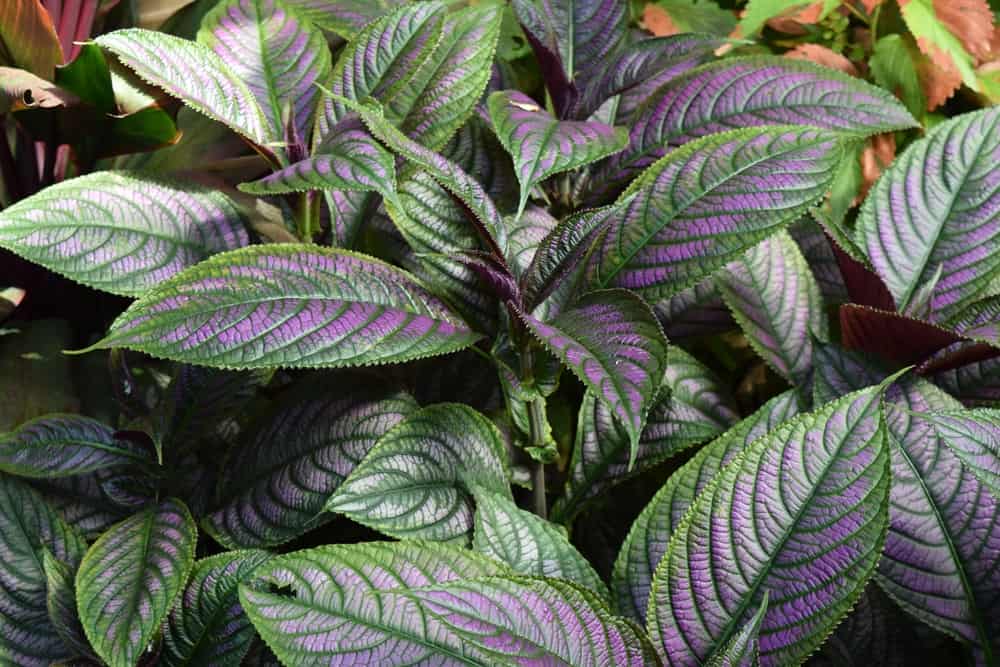
I am not sure why the name of this plant is Persian shield. OK, its shape reminds a little bit to armor shields ancient knights used for a battle, but this sub-shrub is not from Persia at all. In fact, it originates from Myanmar (formerly named Burma).
As I have already said, this Ornamental plant blooms in winter, but you probably won’t see its flowers if you grow it as an annual. Actually, the production of this species’ flowers is a bit tricky, even mysterious.
For example, it is not possible getting flowers even in strictly controlled scientific experiments. No one knows why.
Regardless of the different conditions which scientists have applied to make the plant develop flowers, Persian shield doesn’t respond to the usual environmental conditions. That means that various temperature, daily light, and overall nutritional status can’t cause or accelerate flowering in laboratory conditions.
Commercial growers periodically advertise blooming of this plant, but generally, vigorous blooming interferes with the production of cuttings.
Therefore, some gardeners don’t let tiny flowers bloom and they pinch off stalks as soon as they appear. That way, they encourage branching. The result is a fuller, bushier, and more vigorous plant.
However, this plant is worth keeping in your home because you can enjoy its unique, showy leaves.
Why is Persian Shield purple?
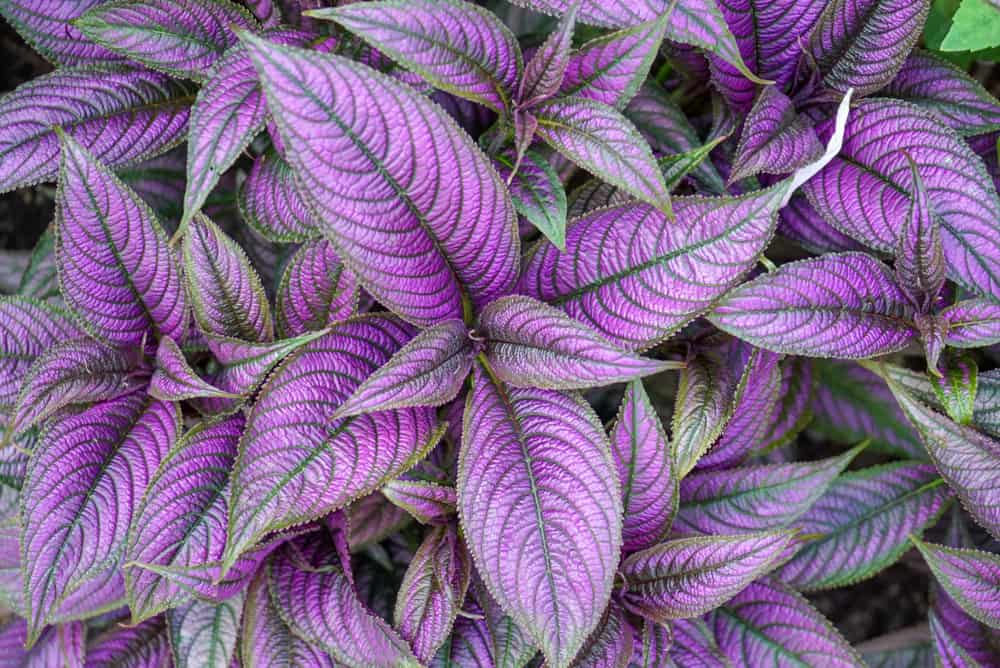
For me, the most interesting about Persian shield is its odd, intensive purple foliage. Unlike this plant, most green ones contain a large amount of herbs’ pigment chlorophyll. Its molecules absorb red and blue light, but not green. Therefore, when the plant contains more chlorophyll, it has a more intense green color.
When it comes to purple plants, they also have chlorophyll, but the concentration of the pigment anthocyanin is much higher. This pigment works opposite to chlorophyll and absorbs purple light more than green.
Scientists believe that the purple foliage acts as a ‘sunscreen,’ which protects the plant’s cells from excessive light.
On the other hand, a high level of anthocyanin in leaves is almost always followed by high concentrations of phenols. Since these chemicals are poisonous, it is most likely that the purple foliage protects the plant from wildlife.
Ways to Enjoy Your Persian shield
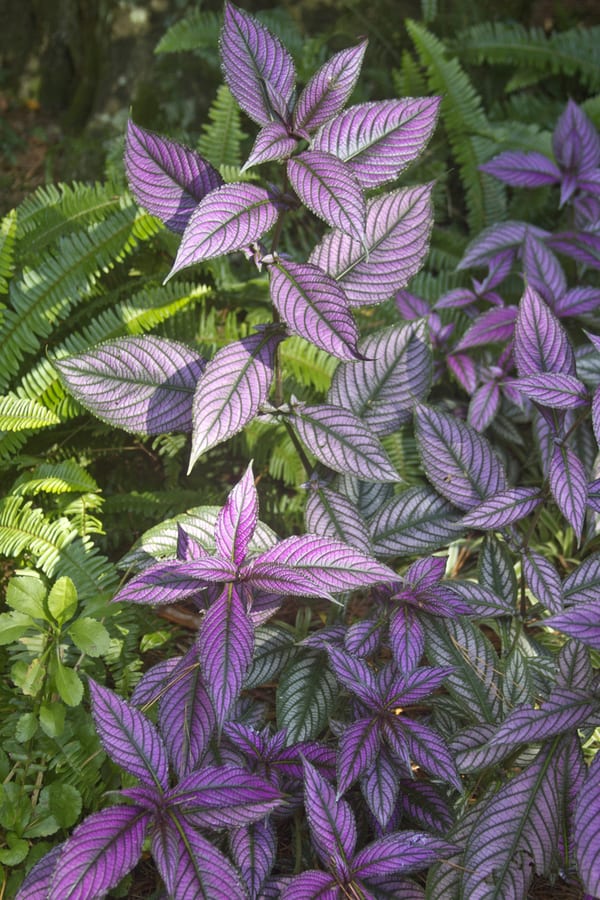
Even though you live in a cold climate, you can enjoy its blooming by planting it in the pot. That way, you will brighten up your home by creating a fabulous tropical ambiance.
There is also an option to keep the container inside, but you should bring it in the house before the first frost in fall. That way, you will enjoy its lush foliage in your garden in spring and summer.
If you live in the South State, you may plant your Persian shield in the garden and enjoy its shy blossom during autumn or winter.
It’s up to you to let your plant reach the full height or to form a bush by regular pinching and sacrificing its height. In the first case, you will enjoy the unrestrictedly spreading of purple leaves.
Otherwise, if you prefer keeping the foliage under control, you may make a compact plant with only a little effort.
How to Plant Persian Shield in Your Garden
Propagation
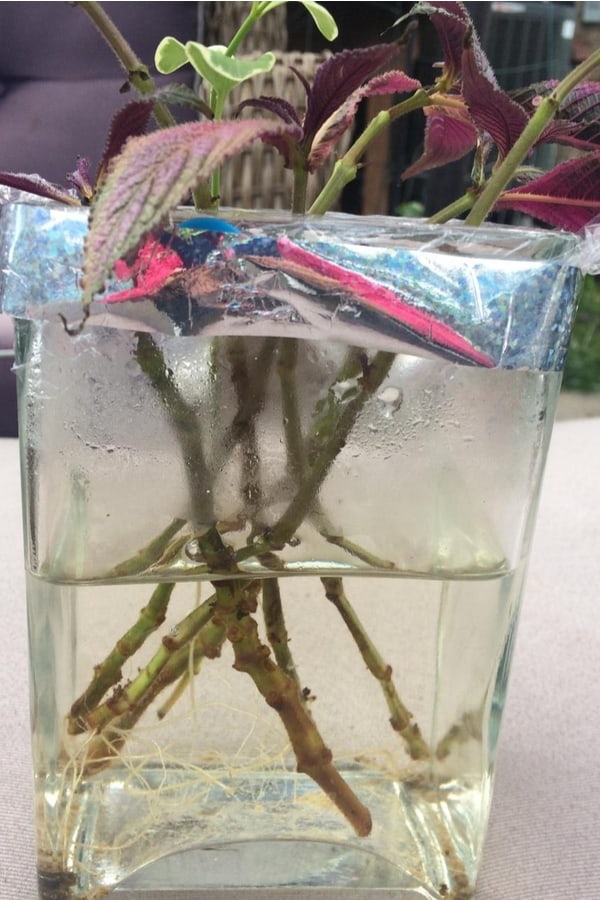
There are two ways of Persian shield propagation. You can do it through seeds and cuttings. Even though both procedures are not complicated at all, it seems that propagating from cuttings work better.
Start propagation of your Persian shield in spring by cutting 2 to 6 inches (5 – 15 cm) long stem tip cuttings below a growth node.
After removing the bottom leaves, wash cuttings carefully, and put them in a glass of water for a few days or into a non-soil medium for two weeks. When you spot small roots, replant young plants in the potting mixture.
Change the water daily if you choose to keep cuttings in the glass, or take care that the rooting medium is evenly moist if you pick out this way.
Plant your seedlings in a container with enough drainage holes, filled with a quality potting soil. Providing regular watering once a week and adding slow-releasing fertilizer quarterly is everything your plant needs.
If you still want to sow seeds, you need to provide an adequate pot and the constant temperatures of 55 to 64 F (13 – 18 C) until seeds germinate.
Repotting
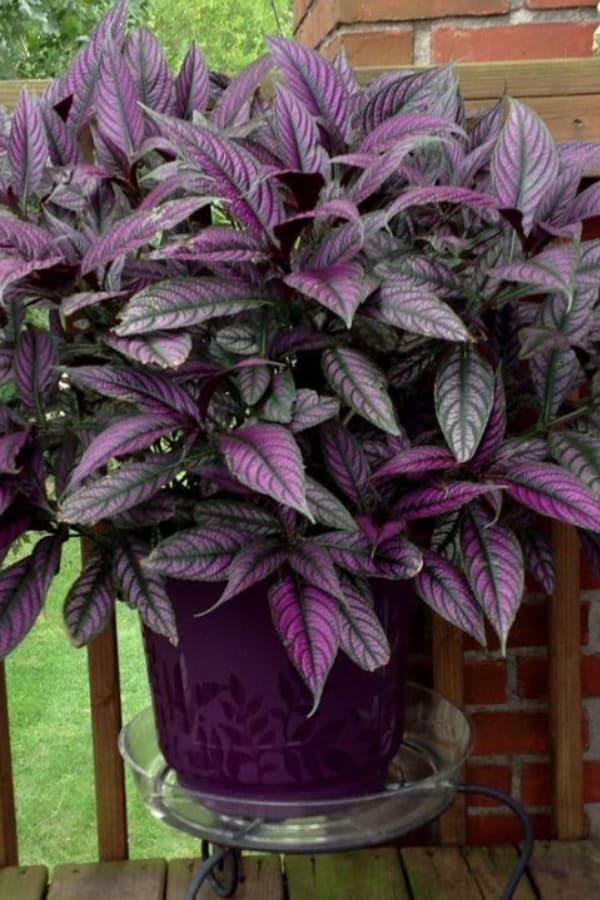
If you decide to keep your plant indoors, you should prune it regularly instead of letting it grow uncontrolled. One of the convenient ways is pruning the roots of older plants.
The other way is repotting young plants once a year until reaching the maximum size. After that, it will be acceptable to repot them every other year.
Also, if your plant doesn’t have enough sun, it can become leggy. In that case, throw away mother plant and replace it with new cuttings.
It is not rare that your Persian shield doesn’t need to be repotted at all. If it thrives and looks healthy, there is no need to disturb it.
However, to encourage it to expand, you have to provide more space for the roots. Transplant your plant in a pot approximately 1 to 2 inches (2.5 – 5 cm) larger than the previous one. Add more soil to the new container and keep it well-moisture.
How to Care Persian Shield in Your Garden
Space
If you wish to plant Persian shield in your garden, you should give them enough space to provide the full development of leaves.
Providing at least 36 to 48 inches (0.9 – 1.2 m) of space between plants will allow proper airflow necessary for vigorous and lush growth.
Soil
As every tropical plant, your Persian shield requires fertile ground with plenty of plant matter which can retain necessary water. To stimulate the vigorous and healthy growth of your plant, you should plant it in well-drained soil with the pH level from 5.5 to 7.5.
When mixing it with vermiculite and compost, and place peat moss over the surface of the ground, your beloved plant will thrive for sure.
Light
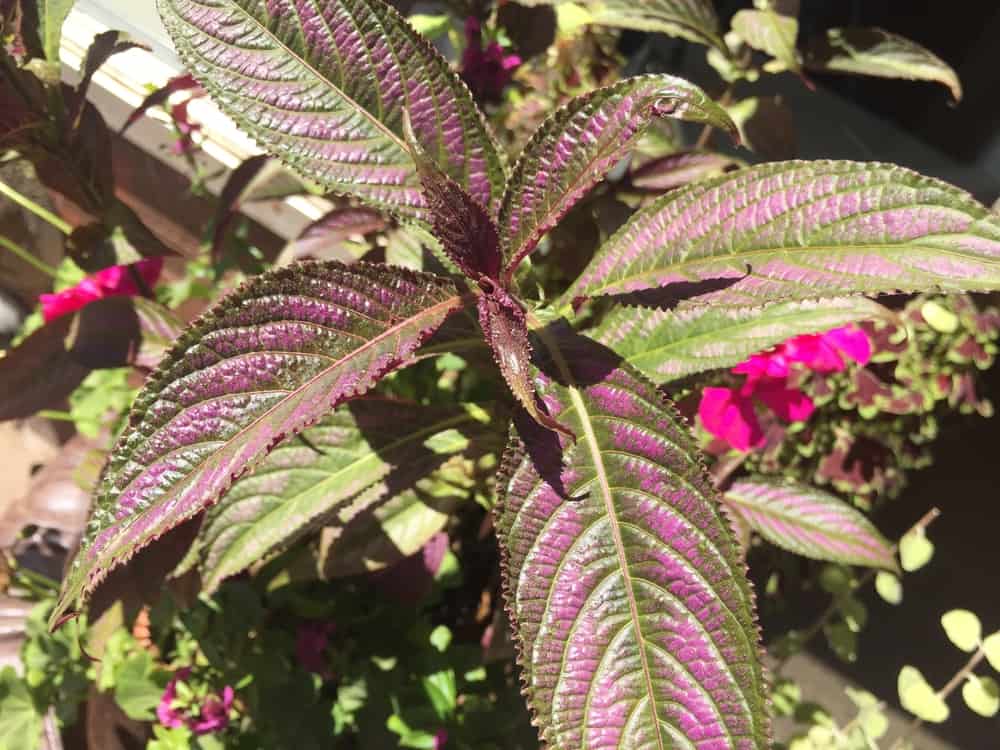
If you decide to grow Persian shield indoors, you should provide artificial lighting or put a pot on a sunny window to encourage branching. Turn the plant from time to time to prevent leggy growth.
For growing outdoors, it is enough finding a place with at least 6 hours of full sun a day and partial shade during the afternoons. Keep in mind that too much sunlight will negatively affect the color of the foliage.
Temperatures
For vigorous growth, this sub-shrub will need room temperatures of 60 to 75 F (15.5 – 24 C) and sultry air. If the air is too dry, you will notice dropping the foliage.
Since it is a tender, frost-intolerant perennial, you should take care to bring your plant back indoors when the temperature drops below 60 F (15.5 C) at night.
If you leave it grow in the garden throughout winter, your plant will probably die back. However, if winter is mild and passes without hard frost, your Persian shield may recover entirely in spring.
Watering
Except for the temperatures higher than 60 F (15.5 C), your Persian shield will need an adequate level of humidity to thrive.
If you grow it indoors, you can put a pot with your plant on a plate full of rocks and a small amount of water. That way, you will allow constant evaporation upward and provide sufficient humidity.
Another way is to provide enough moisture by watering the plant twice a week. During winter, it would be better keeping the soil a bit drier.
For plants growing outdoors, the best solution is frequent watering or installation of an automatic irrigation system. The top 6 inches (15 C) of the ground need to be consistently wet. Adding mulch will prevent evaporation and help the soil to stay moderately moist.
Avoid using water with a high level of chlorine since it can damage your sensitive plant. Also, don’t water your plant with cold water to prevent the occurrence of spots on the leaves.
Fertilizing
Adding well-balanced fertilizer is necessary for your Persian shield. An excessive amount of nitrogen twice a week will encourage the growth of recognizable purple foliage and the development of healthy roots.
My choice is always a balanced liquid fertilizer. Add it while watering to avoid burning the plant.
Once fall comes, you should slow down feeding. In that period, fertilizing once a month is recommended. Return to a regular two-week schedule at the beginning of spring.
Pruning
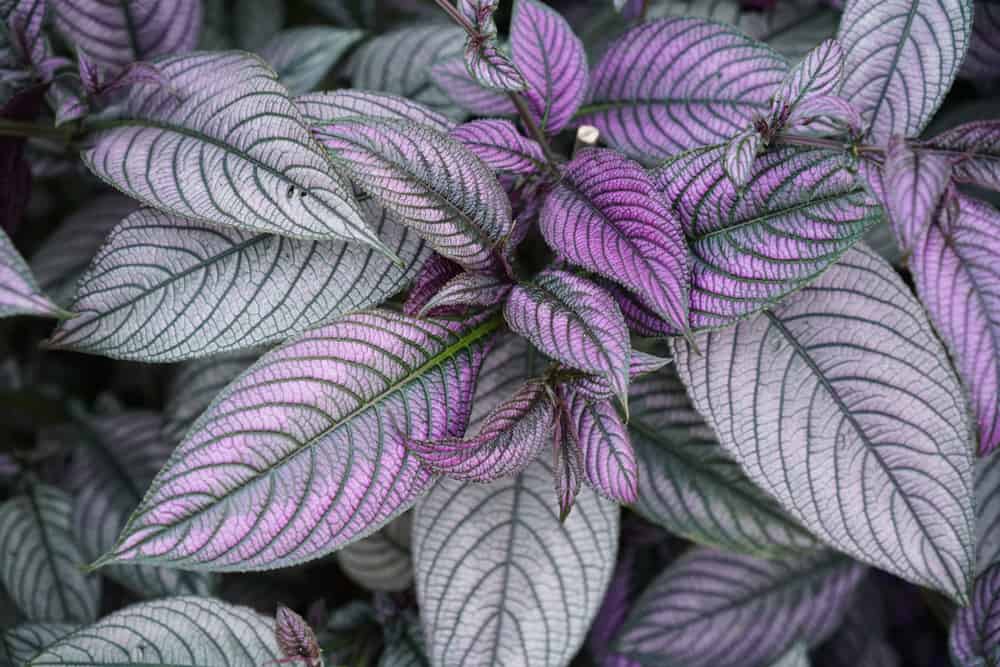
Except for regular removing withered leaves, you should prune your plant to encourage it to grow bushier. Start pruning when necessary. Without doing that regularly, leaves will become leggy and floppy.
Also, gardeners practice to pinch off flower stalks and excess stems in winter because they make the plant weaker. If you do the same, you won’t enjoy tiny flowers, but you will always have a vigorous and lush shrub.
However, avoid removing the fading foliage immediately after blooming. It doesn’t look nice, but it is a normal process while the plant is in a dormant phase in winter.
Persian Shield Pests and Diseases
Persian shield is quite resistant to most pests. Plus, there is no disease which can affect this plant, including well-spread powdery mildew. However, pay attention to a few common issues you can face while growing this beautiful perennial.
Wilting the foliage
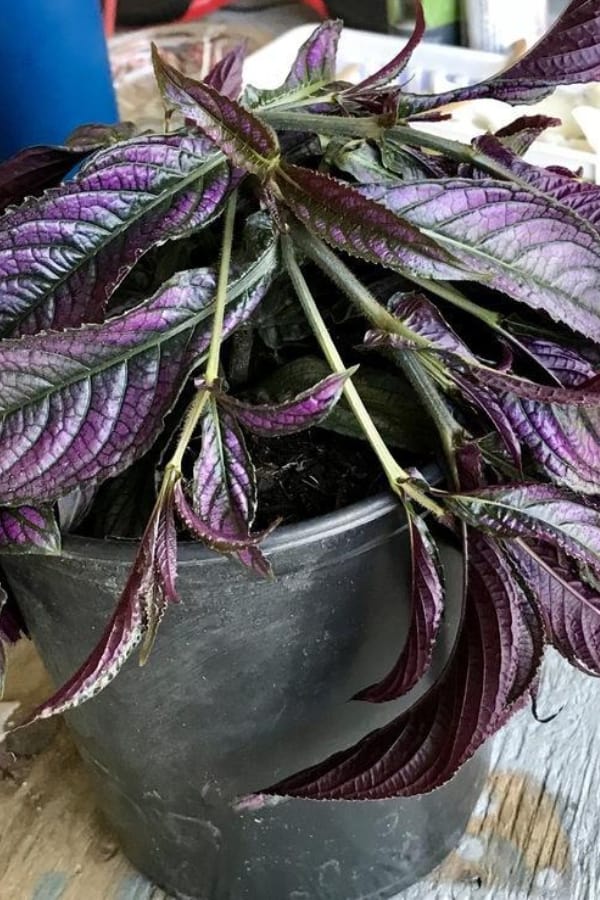
The most severe issue you may face is quick wilting the foliage. The reason is always the same. It will happen when your plant has a lack of water. Solve the problem by increasing the frequency of watering and keeping the ground consistently moist.
Fade foliage
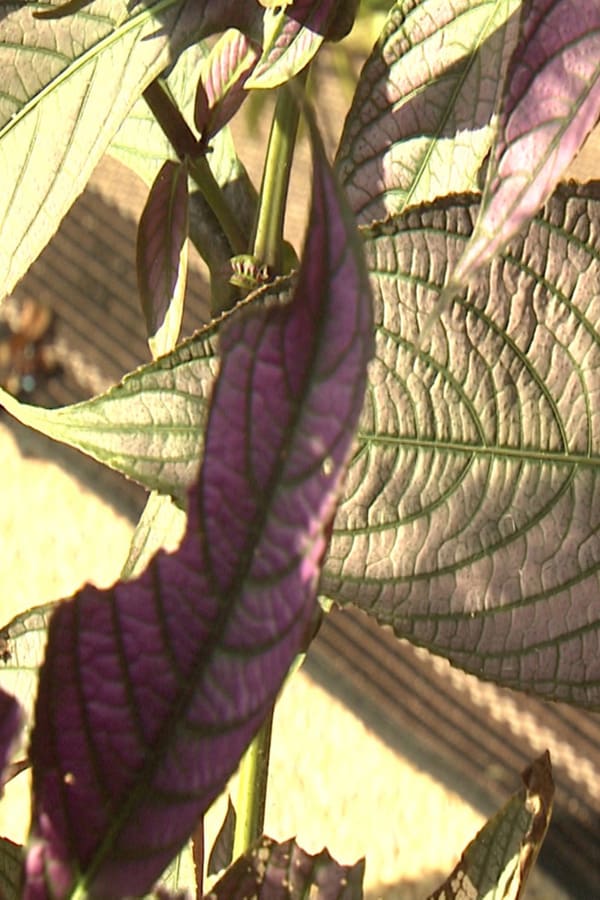
The reason why your Persian shield turns pale is excessive exposure to light, especially during the sunniest summer days.
Providing part shade during the afternoons or adequate shielding from the direct sun will quickly solve the problem. Don’t mix this with regular discoloration of old leaves.
Red spider mites
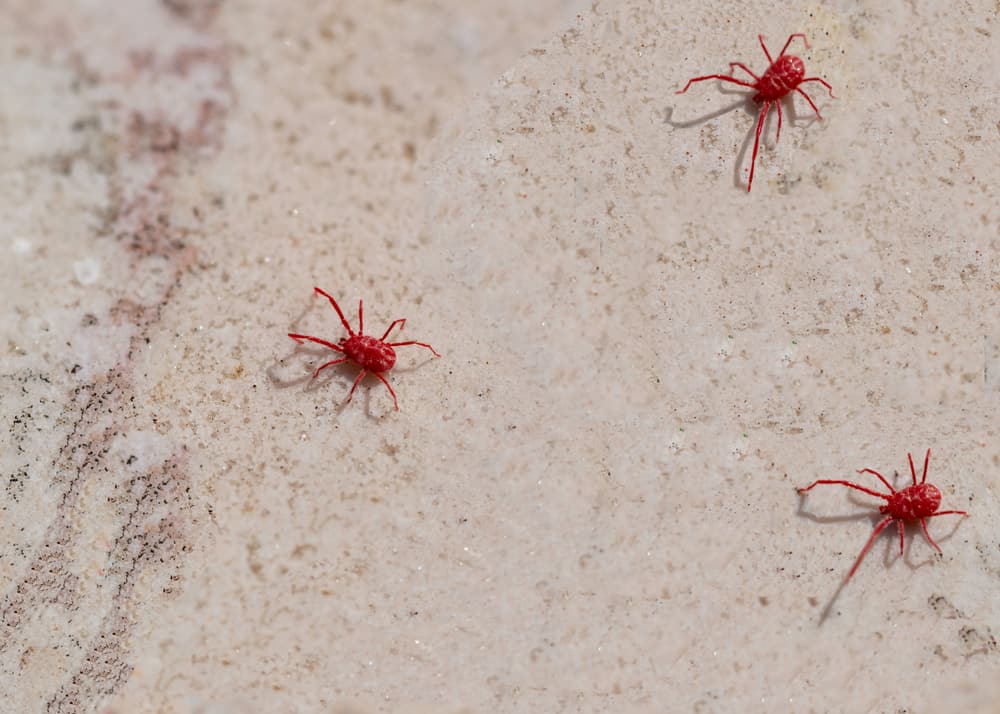
It is the most common pest which can affect your Persian shield growing indoors. These little creatures pierce the leaves and suck necessary moisture out of them. The result is the appearance of spotting and yellow foliage.
Fungus gnats
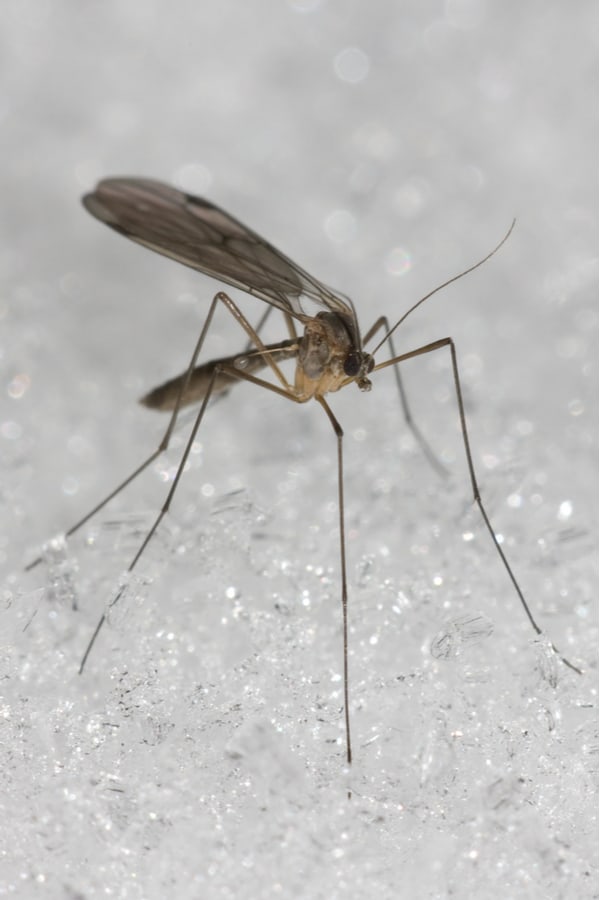
They lay eggs in moist soil. After the larvae develop enough, they attack the foliage.
The problem is serious if both pests attack your plant. Unfortunately, in that case, its death is inevitable. Luckily, spraying the plant with neem oil prevent the adults from laying eggs. Keep in mind that this cure can’t kill the existing fungus.

Leave a comment